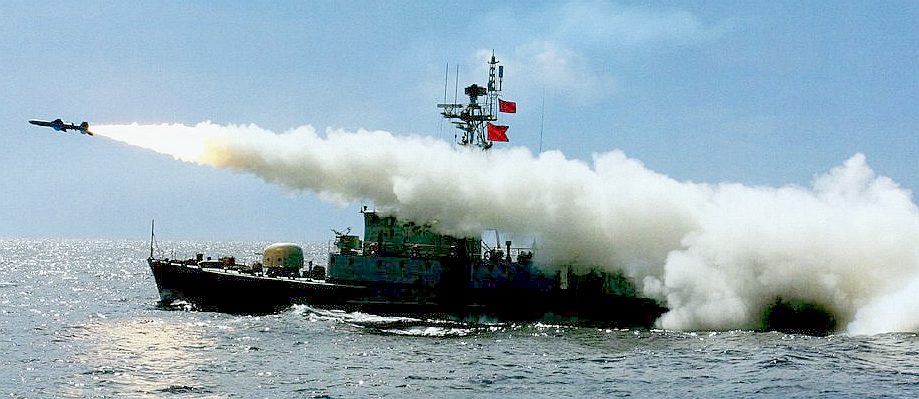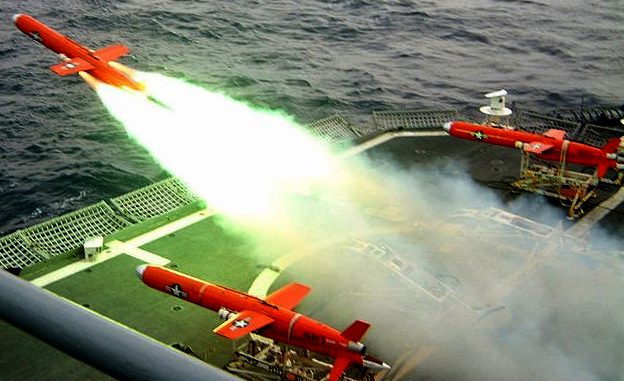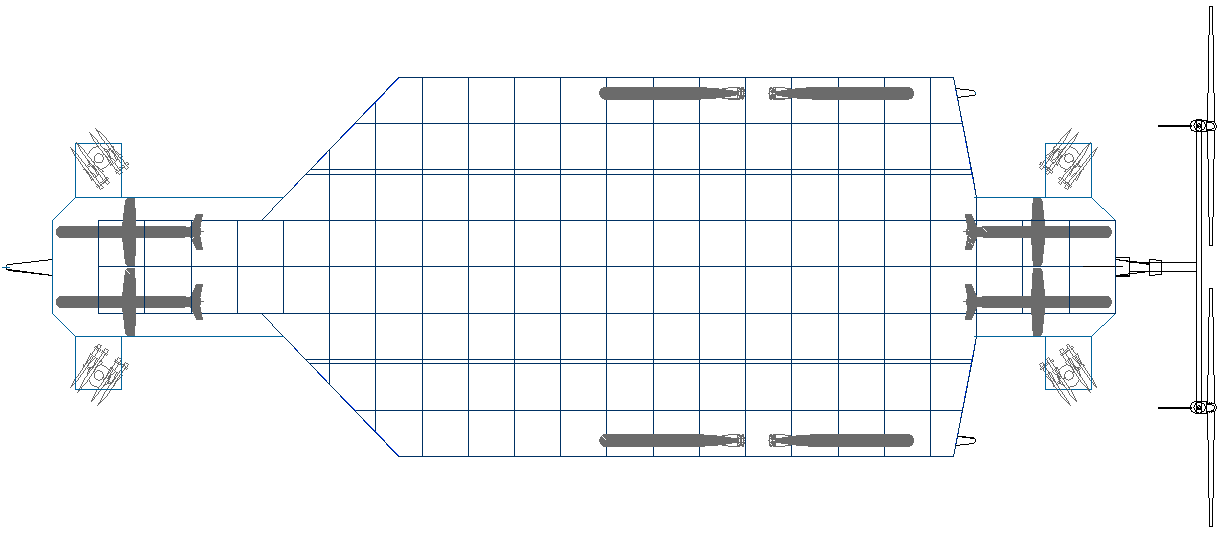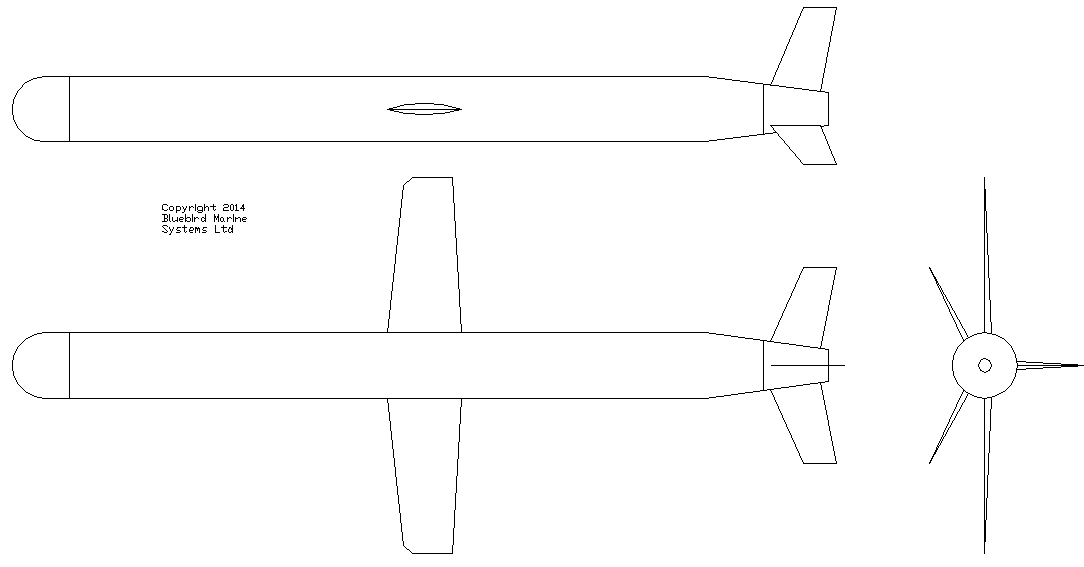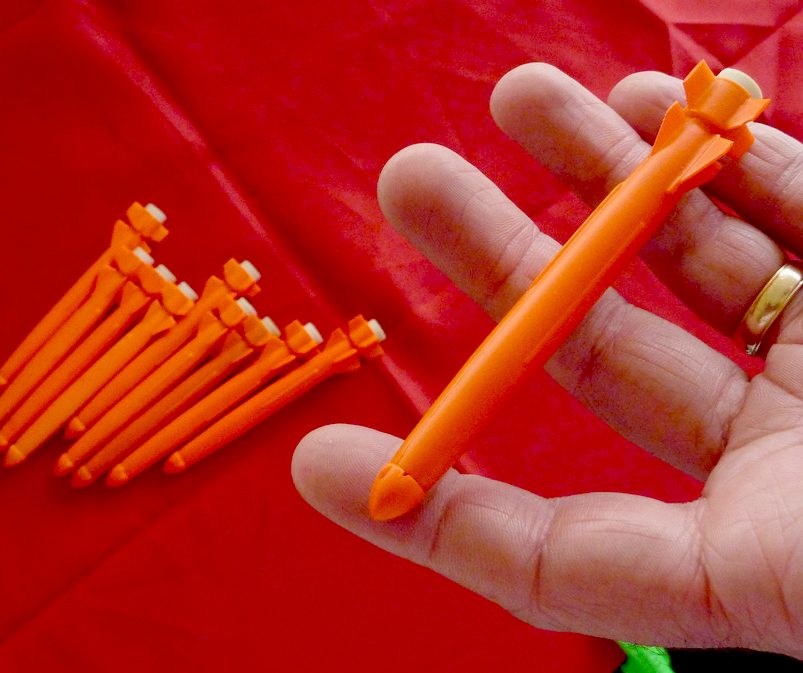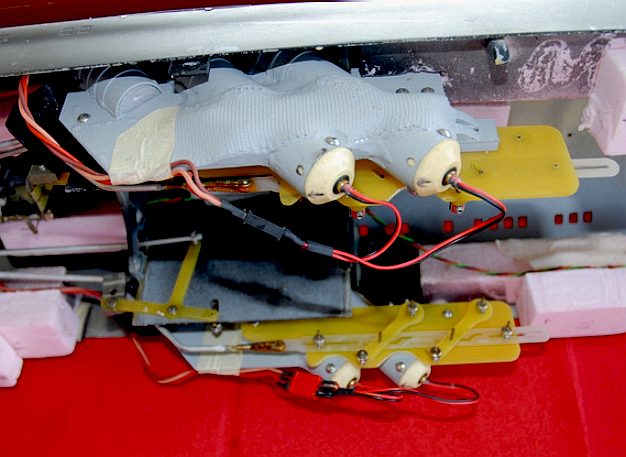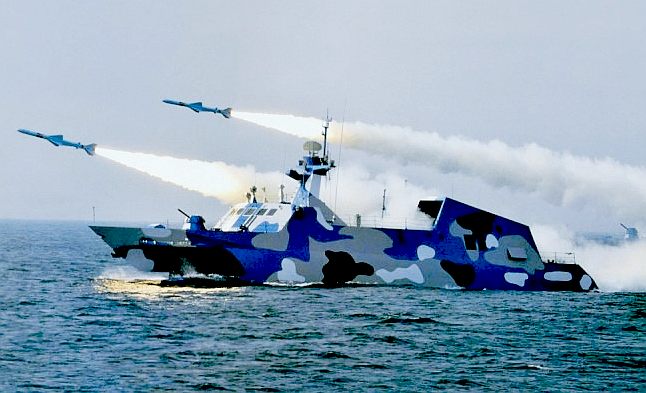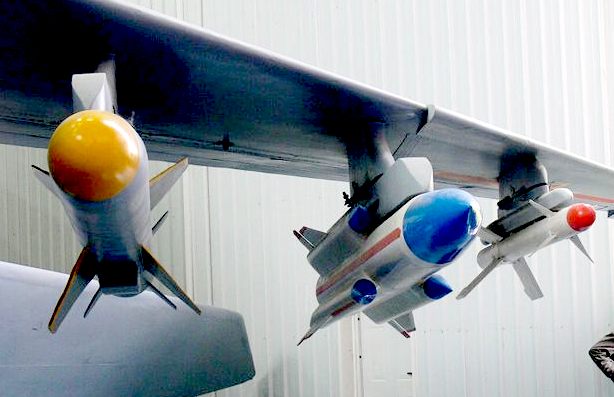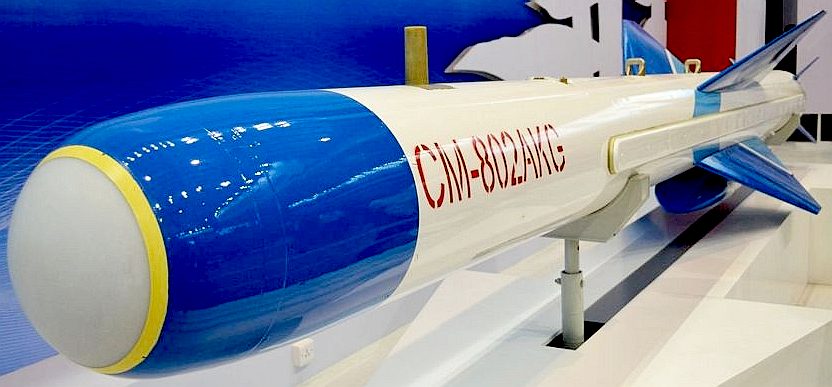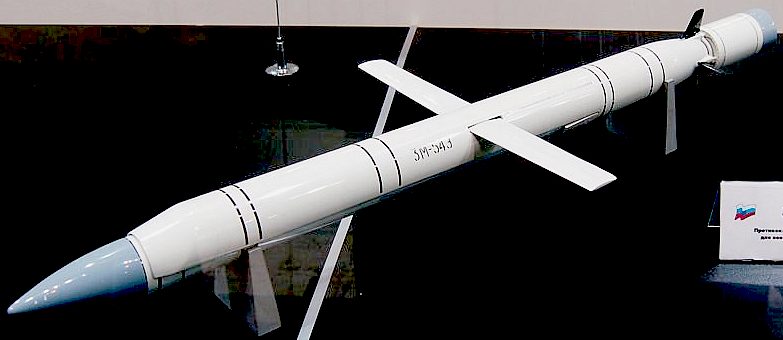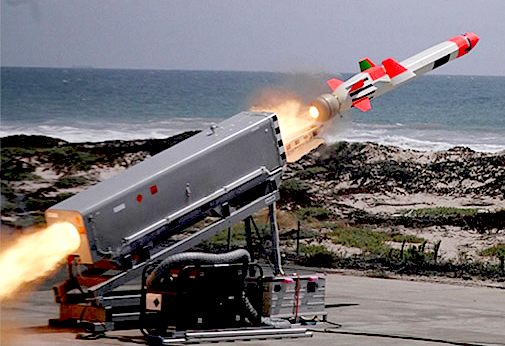|
SCORPION HK - MODEL R/C 1/20th CRUISE MISSILES
|
|||||||||||||||||||||||||||||||||||||||||||||||||||||||||||||||||
|
Test firing of the YJ -82 series of 'Eagle' 8 anti-ship missiles with increased range. Advances over the previous model include a better guidance system and move from solid rocket motors to a turbojet engine with longer fuel tank. China is using the Eagle -82 missiles on their new surface ships, including the 'brigade sea' class destroyers and 'Jiang Wei' class frigates.
The sinking of HMS Sheffield with a French-built anti-ship Exocet AM39 missile during the Falklands conflict, re-affirmed the notion that future naval battles will be won by cruise and SAM missile craft, provided that stray submarine activity is kept in check. Air superiority became a given from the 2nd World War Typhoons, which when armed with rockets, did as much damage on the ground in a few minutes, as a whole week's worth of ground fighting. Cruise missiles no longer need aircraft delivery, with SeaNet routine patrols. One would though need to be careful to avoid sovereign waters, or spark concerns.
The US and UK are busy building bigger aircraft carriers as a show of force, prompting the Chinese to develop ship launched cruise missiles to neutralize the threat. These can be fired from a surface fleet of well over 50 of their 220-ton Houbei Type 2208 missile catamarans. These ships are high-speed littoral vessels capable of between 36 to 50 knots (not known for sure), based on a wave-piercing, low observability (radar cross-section-reduced) catamaran, to an Australian ferry design. The 2208 is a key component of current defence strategy.
A more powerful and cost effective long-term solution would be a SeaNet fleet of ScopionHKs.
TARGET
PRACTICE DRONE - Cruise missile variants being rocket launched from the deck of a US Navy warship.
The BQM-74 Chukar is a series of aerial target drones produced by Northrop.
They are recoverable, remote controlled, subsonic aerial target missiles, capable of speeds up to Mach 0.86 and altitudes from 30 to 40,000 ft (10 to 12,000 m).
SCORPION HK - THE 1/20th SCALE NAVAL MODEL
A military version of the Bluefish zero carbon cruiser (ZCC) is to have up to four cruise missiles installed under the solar wings of the vessel. Two of these missiles will fire facing forward and two will fire backwards @ 1/20th scale to prove the concept.
This small scale model is not intended to be a real weapon, as in with explosives and a guidance system, though, there was much coverage on the subject in 2002-3, some of which articles are reproduced below as extracts.
Our agenda is simply to prove the concept that a small vessel of only 170 feet in length in total, can carry sufficient weaponry to sink aircraft carriers, destroyers, nuclear submarines, and any aircraft that threaten its own safety - regardless of the fact that there is no crew to keep safe - because it is an autonomous robot. A major plus in evaluating mission risks and priorities. There is though the value of the asset to protect, and that includes eliminating (and protecting) pirates on the high seas who might be foolish enough to get too close for their own safety. A Scorpion HK can optionally be manned and/or driven as a drone by remote HQ.
On our HKs the cruise missile will be mounted under the solar decks and launched horizontally using rockets, much as they launch Tomahawks from the decks of ships at the moment. The SAM missiles will be mounted on twin fore and aft turrets to enable rapid multiple target acquisition, independently. The same model will carry 1/20th scale SAM and torpedoes, such that the asset is seen as a serious deterrent to any would be aggressor.
Normally, a ship that carries cruise missiles is considerably bigger than a Scorpion HK. Size of course equals cost of build, launch and general upkeep. By keeping a warship small, yet still big enough to carry such armaments, the cost of of fielding a serious deterrent on a continuous basis, is kept low enough that national debts might be managed sustainably.
An autonomous warship saves weight and volume by not having to provision for a crew, provide sleeping quarters, entertainment, laundry and toilets, etc. This means more room for weapons and sensors. There is also no need for heating or cooling, or other support for respiration.
A Scorpion HK combat warship - fitted with 4 x SAM turrets (one per quadrant), for 360 degree independent cover. Each SAM turret carries 8 missiles (Rapier example), giving a battery of 32 rockets to fend off enemy aircraft. The micro battleship is also shown here with 4 Tomahawk cruise missiles in protected bays, fore and aft, and 4 x 21" MK48 torpedoes in the outriggers - all drawn to scale - as a prelude to proof of concept. The torpedoes and cruise missiles would not be visible, but we've shown them as though the drawing were an x-ray. The OAL of this clever design is 52.7m or 171 feet. She is designed to cruise all day and night at 7-10 knots on energy from nature - and sprint up to 25knots (depending on specification) in attack mode. This original concept vessel is design copyright © BMS Ltd 2014. The technology is also patent applied for.
If the plan is to overwhelm an enemy's carrier strike force, this is the vessel to do it. A force of 5 or more robots operating in SeaNet fashion will present an unacceptable threat of annihilation to any group of warships foolish enough to enter sovereign waters. Quite literally, they will be blown away - and the Scorpion HKs are disposable items, with no risk of losing human life. It's Kamikaze role reversal - with an encroaching enemy sure to die trying.
WHAT'S SO SPECIAL ABOUT THE SCORPION HKs?
Apart from the fact that once launched there are no fuel costs, the unique hull design of these naval drones provides a degree of flexibility that is unparallel in naval military history - especially for such a compact craft.
To now, it has not been possible to use one basic design platform to undertake so many different military functions. On this page we take a look at the method of housing and firing cruise missiles of an equivalent size to the very popular Tomahawk series and generic Chinese and Russian clones. The 1/20th scale is just big enough to be able to use components and materials that are commonly available in most well stocked hobby and hardware stores.
1. SAM MISSILES 3. TORPEDOES 5. SEANET
Matt Spade's ICBM's and the ingenious launch mechanism inside the subs hull.
MATT SPADE'S GAS POWERED MISSILES
Not quite the same as a cruise missile, but in the spirit of model testing and development, Matt Spade of Georgia has successfully fired Propel gas powered missiles from his large RC boomer - missile submarine model. The missiles are filled with Propel and set into the model with the firing pins in place. A command from the transmitter pushes the missile off the pin and the gas is released, so launching the missile from the sub. It doesn't get much cooler than that.
Matt's design is fully explained in the SubCommittee Report article - "Launch This" Issue number 21 - June 1995.
You can order a copy from www.subcommittee.com. Ray Mason has in depth coverage of Matt Spade's missiles on one of his SubCommittee Video Reports. In it, Matt shows how they are built and fired from his sub.
RAY MASON (Check or Money Order Only)
THE SUB COMMITTEE
The
SubCommittee is a not-for-profit organization of members from around the
globe who share an interest in building model submarines. As a group they
are dedicated to the advancement of the submarine modeling hobby. The
SubCommittee was created in 1990 as a network of like minded submarine
enthusiasts to pool their resources. According to their website, the founding members were Ken
Hart and Marshall Clark.
The SubCommittee brought together outstanding modelers from around the world and pooled their resources in the SubCommittee Report, or SCR, the world's first magazine dedicated to submarine modelling.
SUBREGATTA
With membership growth SC held their first international meeting called: SubRegatta. SubRegatta was so successful that it became an annual event, initially hosted by the U.S. Submarine Base in Groton, CT. The event moved to Johnston, RI following the commencement of the War on Terror in 2001. SubRegatta subsequently moved to Carmel, IN in 2005 and has been held there to this day.
G. COSTING FOR R/C MODEL CRUISE-MISSILES @ 1/20TH SCALE
1/5th and 1/10th SCALE MODEL UPSCALE
Models to 1/10th scale (5 meters or 16 feet) and 1/5th scale ( 10 meters or 32 feet) could be produced that would be useful oceanographic tools, and/or naval weapons. At the moment there is no funding available to us for such research.
FULL SIZE DEVELOPMENT PLATFORM BUILD ESTIMATES 2014
SUBMARINE INDEX
Alvin DSV - Woods Hole Oceanographic Institution Deepsea Challenger - Mariana Trench, James Cameron 2012 HMS Astute 1st of Class HMS Vanguard- Trident INS Sindhurakshak - explosion & sinking Littoral combat vessels Lusitania - Torpedo attack Nuclear submarines lost at sea Predator - Covert submarine hunter/killer Seawolf - Autonomous wolf pack deployment of Predator mini-subs Torpedoes - UUV anti submarine weapons Trieste - World record depth - Mariana Trench 1960 U20 - Kapitan Leutnant Walther Schwieger USS Bluefish WWI submarine USS Bluefish - Nuclear submarine USS Jimmy Carter - Seawolf class fast attack nuclear submarine USS Nautilus - 1st nuclear submarine & subsea north pole passage USS North Dakota - 11th Virginia class submarine USS Scorpion - Lost at sea with all hands
LINKS & REFERENCE
PT boat contra rotating electric torpedo The
Guardian June 2003 Terrorism David Fickling Aardvark
DIY cruise missiles Hackaday 2010 diy-guided-missile-err-model-rocket Giaoduc Hoc gia My Cac nuoc o Bien Dong nen hop suc day Trung Quoc 1 bai hoc post Andrew Erickson 2010 combined arms anti ship exercise in east china sea 30 june 5 july Indian Defence China anti ship missile http://indiandefence.com/threads/china-anti-ship-missile-old-detail.27555/ http://www.andrewerickson.com/2010/07/combined-arms-anti-ship-exercise-in-east-china-sea-30-june-5-july/ http://www.smartplanet.com/blog/thinking-tech/stealth-cruise-missile-blasts-through-navy-ship-video/ http://hackaday.com/2010/08/03/diy-guided-missile-err-model-rocket/ http://www.theguardian.com/world/2003/jun/04/terrorism.davidfickling http://www.subcommittee.com/ http://www.rc-submarines.net/torpedoes.html http://www.pt-boat.com/torpedo/torpedo.html
BLUEFISH DEVELOPMENT PROJECT INDEX A-Z
BRUCE SIMPSON's DIY CRUISE MISSILE - MEDIA COVERAGE 2002
Bruce Simpson - DIY rocket man
THE GUARDIAN June 2004 - DIY CRUISE MISSILE £3,000
Chinese Anti-Ship Cruise Missile Firing as Part of Combined Arms Anti-Carrier Exercises in
the East China Sea, 30 June-5 July 2010. The PLA carried out “live firing training” in a relatively small box-shaped area off Zhejiang Province.
The theme of the combined arms exercises was to demonstrate the ability to attack surface
ships by a Carrier Strike Group (CSG), may have been to dissuade the U.S. Navy
from holding exercises of a carrier strike group with its South Korean counterpart in areas near China’s territorial waters.
Such events being seen as potentially hostile and at the very least
threatening. Houbei Type 022 missile catamaran with its YJ-83 anti-ship cruise missiles. The Chinese Navy advocate the employment of multi-axis “saturation” attacks against a carrier strike force, in which both ballistic missiles launched from land-based mobile transporter erector launchers (TELs) and cruise missiles launched from ships or submarines might be used in coordinated strikes designed to disable a carrier strike group’s defenses by overwhelming them.
LOW COST CRUISE MISSILE - AARDVARK
A JH-7A fighter carries the YJ-91 anti-ship missile with similar dimensionss and tactical capabilities as the "Eagle-91" which France and Germany developed with ANS missiles. The "Eagle-91" supersonic anti-radiation missile offers high flight speeds to enhance lethality, to effectively attack large surface ships such as the U.S. Ticonderoga & Burke class if using AN/SPY-1 Aegis phased array guidance radar.
Onboard Computing
The export-oriented C-802A anti-ship missile developed by China's Haiying Electromechanical Technology Research Institute, also known as Eagle-2, which is an improved version of the C801, adding length and more cruise range with a turbo-jet engine, radio altimeter performance more powerful warhead. The C802 missile has a shore-to-ship, ship-to-ship and air-to-ship capability - and not only equips the Chinese navy and air force, but is also exported to Bangladesh, Pakistan, Thailand, Indonesia and other places. Iran has established a C-802 anti-ship missile assembly line because the C802 anti-ship missile system is ideal for coastal bases and a wide range of sea defenses, such as needed for the Strait of Hormuz against enemy destroyers, frigates, landing craft and other ships.
Launch Facilities
The C-705 anti-ship missile is based on the C-704 with an improved guidance system and new solid rocket engine improvements. The installation of a seeker adds GPS and Beidou navigation and waypoint planning, with anti-interference ability, and television or infrared seekers. The new thrust rocket engine improves combat range from 140km to 170km. The C705 air-launched anti-ship missile system is suitable for airborne and ground-based multi-platform loading, designed mainly for use against frigates and medium-sized sea targets.
The 3M-54E is a Chinese long range supersonic cruise missile with rocket acceleration to mach 2.9 for improved penetration and attack capabilities.
At What Cost
Norwegian-based Kongsberg Defence & Aerospace firm has been developing the Naval Strike Missile, one of the most agile cruise missiles and soon-to-be weapon of choice for the F-35 Lightning II stealth fighter. The sophisticated 900-pound missile is equipped with GPS, inertial and terrain reference systems, enabling it to stealthily maneuver along all kinds of terrain such as the coastline, oceans and over land. To avoid radar detection, it's capable of cruising in "sea-skim mode" just above the ocean's surface. It can also pull off quick random high-G-force maneuvers to prevent getting shot down at the very last second. A combination of an imaging infrared (IIR) seeker and an onboard target database ensures that the missile can seek out and detect targets up to 100 nautical miles away with pinpoint precision.
JUST A THOUGHT - THE SIMPSON LLCM FOR SCORPION HKs
Where Tomahawk cruise missiles are so expensive, a Scorpion HK could be fitted with four LLCMs with a reduced range and payload, that would still be sufficient to take out a warship, and yet reduce the cost of a ZCC battle cruiser significantly.
BLUEFISH DEVELOPMENT PROJECT INDEX A-Z
|
|||||||||||||||||||||||||||||||||||||||||||||||||||||||||||||||||
|
This website is Copyright © 2014 Bluebird Marine Systems Ltd. The names Bluebird™, Bluefish™, SeaNet™, SeaWolf™ and the blue bird and fish in flight logos are trademarks. CONTACTS The color blue is a protected feature of the trademarks.
|
|||||||||||||||||||||||||||||||||||||||||||||||||||||||||||||||||
